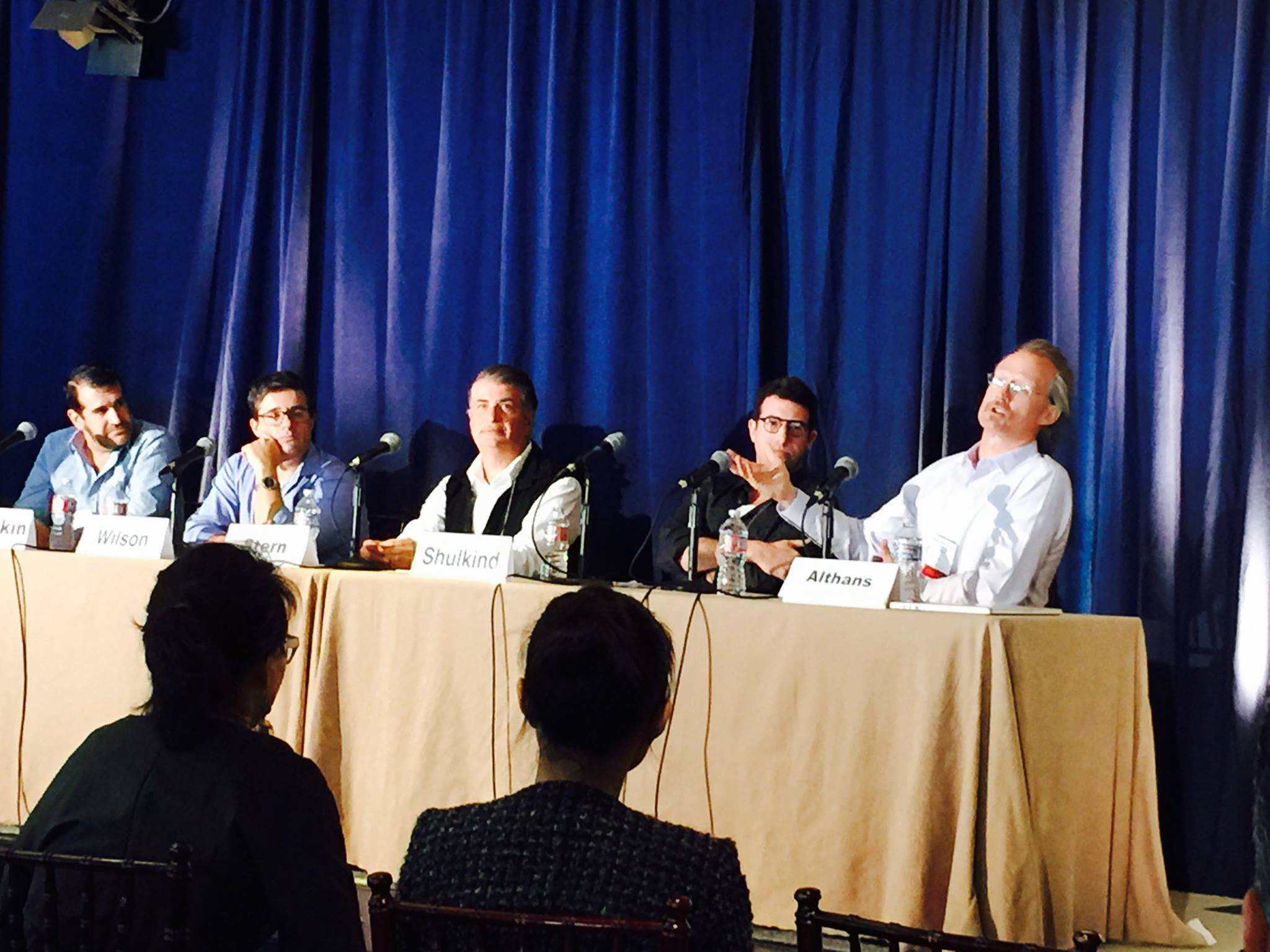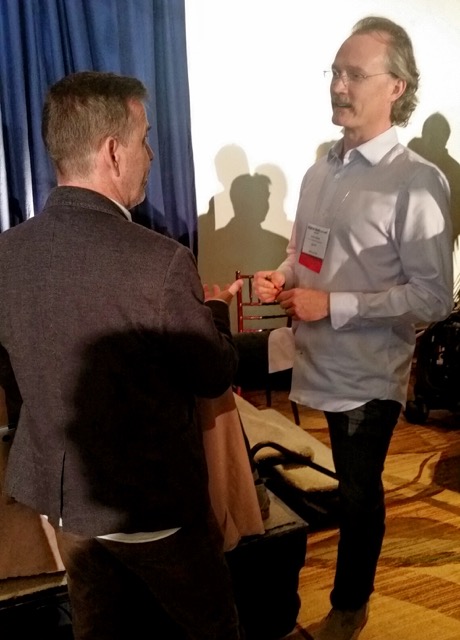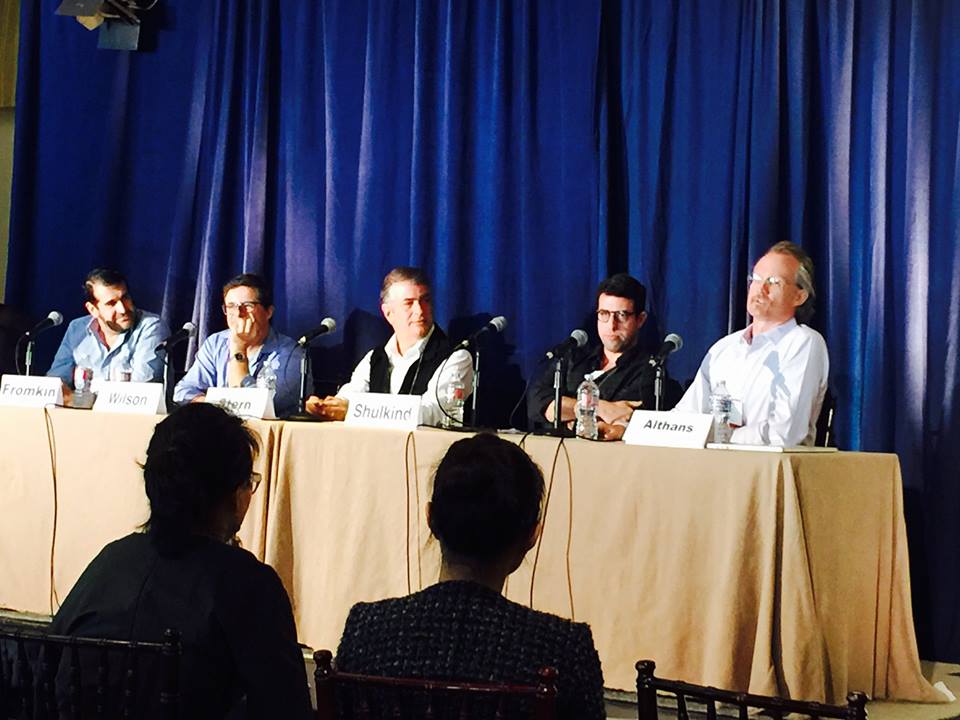
By: Brittany Nicole La Hue
This past week, Reel FX director, director of photography and VFX supervisor Kevin Althans spoke on a panel at the Digital Hollywood conference about VR and AR production. Althans is the director behind Reel FX’s recent GE VR experiences, which gave viewers a behind-the-scenes look into some of GE’s top technology of the past century, from the locomotive to the 9HA gas turbine. He is currently working on a VR project for the WWE as well as projects for many other brands.
If you’ve ever wondered what the best practices are for producing for VR, how VR production differs from 2D live action production, or what the future of the VR production world looks like, Althans delivered some great insight!

Make sure VR makes sense for your client’s project
First and foremost, Althans notes that it’s important to have a conversation with your client before agreeing to take on a virtual reality project. “Clients have a desire to do VR in sort of the same way that they wanted to do ‘viral’ back when YouTube came out 10 years ago,” says Althans. “They knew that viral was the next thing and they wanted to be on top of it, but they didn’t understand it.” A virtual reality experience just for the sake of a virtual reality experience isn’t going to help anyone – rather, it detracts from both the technology and the brand. Althans advises that you make sure your clients’ goals are understood early on, and that they truly understand the challenges in front of them.
And just because this technology is impressive, doesn’t mean that that the ideas behind the pieces don’t matter just as much as in 2D production. “360 isn’t just about taking your existing paradigms and shipping them over to a new platform,” warns Althans. “It’s a unique platform with unique challenges.” And thus, content is still king – and context still reigns as queen. “It takes an extreme choice to put this clunky thing on your head,” says Althans in regards to a VR headset like Samsung Gear or Oculus Rift. “Whatever you’re giving [the user] to look at better damn well be interesting or they’re just going to take it off – it’s not like showing them a commercial during football or surprising them with a pre-roll on YouTube.”
Be resourceful
Right now, there’s no one way to shoot in VR. There are multiple cameras, multiple camera companies and various types of camera rigs – and all are pretty much hacked together for each job. Althans shared that Reel FX has been known to use the HeadspaceVR rig, 360Heroes rigs, red cameras, fish eye lenses, regular GoPro cameras and Google Jump on various productions – and usually in combination with other cameras and rigs. “There’s no one-size-fits-all equation for this,” advises Althans.
The data load is insane
With virtual reality, the amount of data accumulated in a short amount of time is mind-blowing – but many people aren’t aware of this. “We had a job where we shot 19 hours of footage and the client wanted to see all of it the next day – stitched,” Althans says. In the WWE job, Reel FX used a HeadSpaceVR rig and six other GoPro-based rigs. They shot for only 30 minutes, but the DITs and camera operators worked until 5 a.m. getting all the footage off the carts and decks.
Reel FX has figured out a few ways to hack this data problem. One way is to use six computers streaming the footage in real time being stitched together. This gets the editing and stitching done in real time. “Inventing these systems and the work flows as we go along is part of the job,” says Althans.

The future of VR
“The process of production is happening so fast, you can’t ever stop learning about it or asking questions,” says Althans. He told the audience about Thomas Edison’s first movies, which were only about 10-minute long clips. That didn’t detract from the excitement from audiences at the time, for whom the technology was so new and exciting. The technology only got better over time, and that is what will happen in VR.
Althans notes that right now the Samsung Gear has only about a 4k by 2k image file. The CTO of Oculus Rift claims that a 30k-40k image is the size needed to have a total presence without any loss of pixels – quite the jump. However, Althans predicts that tech companies with deep pockets like Google will be solving the problems of image resolution and data size very soon. These companies are already quite involved with the VR industry and they have the money, resources and potential ROI to invest in more research and innovation.